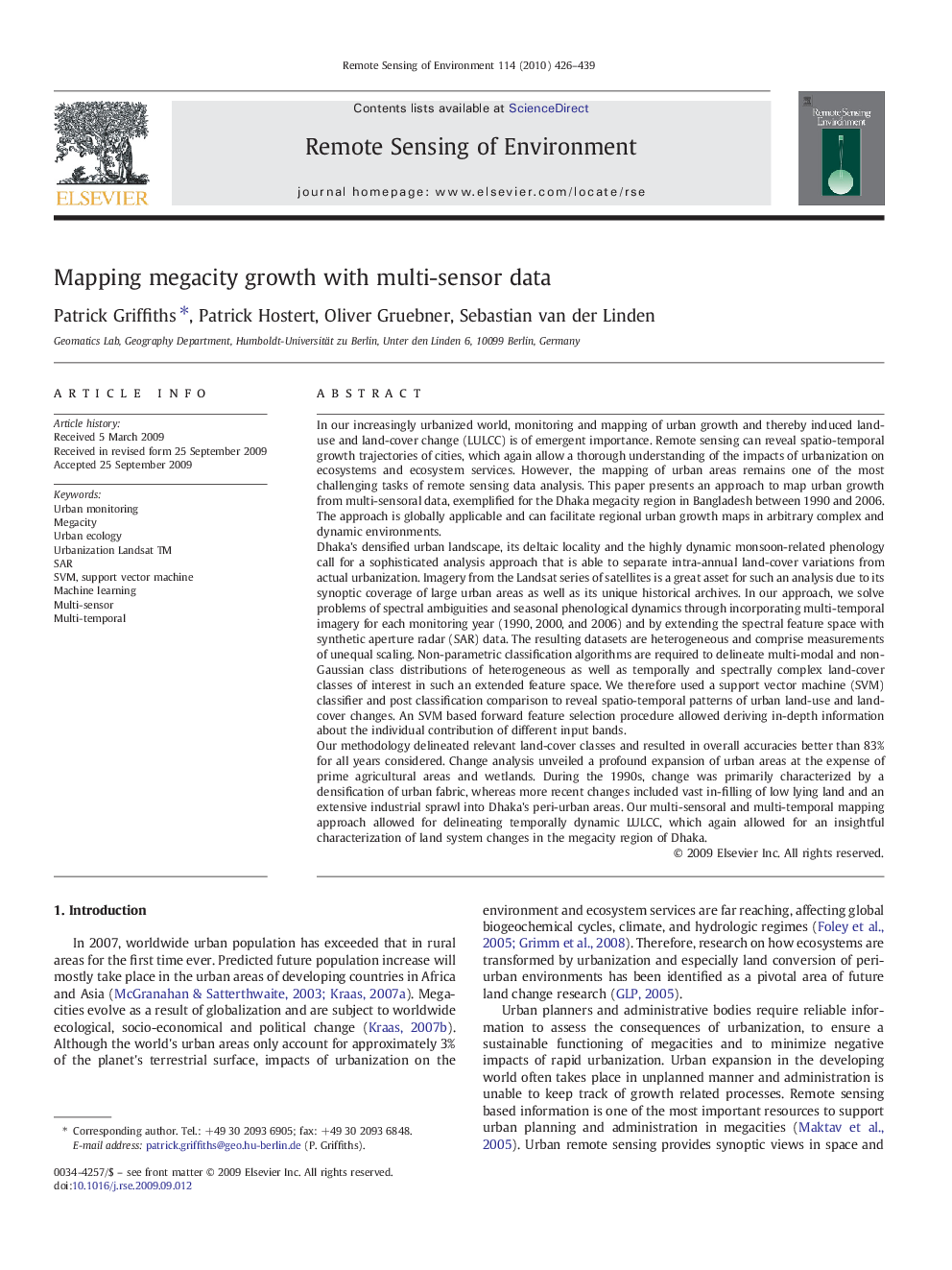| کد مقاله | کد نشریه | سال انتشار | مقاله انگلیسی | نسخه تمام متن |
|---|---|---|---|---|
| 4460001 | 1621307 | 2010 | 14 صفحه PDF | دانلود رایگان |

In our increasingly urbanized world, monitoring and mapping of urban growth and thereby induced land-use and land-cover change (LULCC) is of emergent importance. Remote sensing can reveal spatio-temporal growth trajectories of cities, which again allow a thorough understanding of the impacts of urbanization on ecosystems and ecosystem services. However, the mapping of urban areas remains one of the most challenging tasks of remote sensing data analysis. This paper presents an approach to map urban growth from multi-sensoral data, exemplified for the Dhaka megacity region in Bangladesh between 1990 and 2006. The approach is globally applicable and can facilitate regional urban growth maps in arbitrary complex and dynamic environments.Dhaka's densified urban landscape, its deltaic locality and the highly dynamic monsoon-related phenology call for a sophisticated analysis approach that is able to separate intra-annual land-cover variations from actual urbanization. Imagery from the Landsat series of satellites is a great asset for such an analysis due to its synoptic coverage of large urban areas as well as its unique historical archives. In our approach, we solve problems of spectral ambiguities and seasonal phenological dynamics through incorporating multi-temporal imagery for each monitoring year (1990, 2000, and 2006) and by extending the spectral feature space with synthetic aperture radar (SAR) data. The resulting datasets are heterogeneous and comprise measurements of unequal scaling. Non-parametric classification algorithms are required to delineate multi-modal and non-Gaussian class distributions of heterogeneous as well as temporally and spectrally complex land-cover classes of interest in such an extended feature space. We therefore used a support vector machine (SVM) classifier and post classification comparison to reveal spatio-temporal patterns of urban land-use and land-cover changes. An SVM based forward feature selection procedure allowed deriving in-depth information about the individual contribution of different input bands.Our methodology delineated relevant land-cover classes and resulted in overall accuracies better than 83% for all years considered. Change analysis unveiled a profound expansion of urban areas at the expense of prime agricultural areas and wetlands. During the 1990s, change was primarily characterized by a densification of urban fabric, whereas more recent changes included vast in-filling of low lying land and an extensive industrial sprawl into Dhaka's peri-urban areas. Our multi-sensoral and multi-temporal mapping approach allowed for delineating temporally dynamic LULCC, which again allowed for an insightful characterization of land system changes in the megacity region of Dhaka.
Journal: Remote Sensing of Environment - Volume 114, Issue 2, 15 February 2010, Pages 426–439